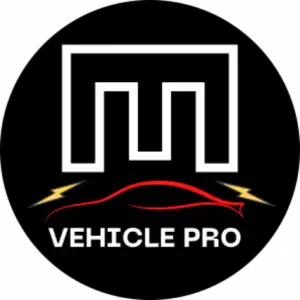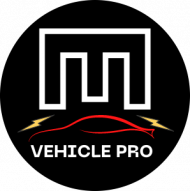Can You Charge a Tesla in the Rain?
Safety Tips for EVs
Tesla makes some of the most advanced, safe and efficient electric vehicles (EVs) on the market. But is it safe to charge your electric vehicle in wet weather? Should you be worried about short circuits or lightning strikes?
Tesla owners can safley charge their vehicles in the rain. This is because both Tesla Superchargers and Wall Connectors are built to withstand various weather conditions, including rain and snow. Moreover, Teslas are equipped with advanced safety features designed to prevent electric shocks.
Nonetheless, caution is advised when using Gen-2 Mobile Connectors outdoors in wet conditions due to their lack of weather-resistance. Always ensure that charging ports and connectors are dry before use. Additionally, avoid standing outdoors while charging during thunderstorms and refrain from charging under flood conditions for optimum safety.”
Can I Charge a Tesla in the Rain at a Supercharger?
It’s safe to charge your Tesla at a Supercharger when it’s raining because:
- Superchargers are grounded and designed to charge safely in wet conditions
- As soon as you plug in, your vehicle communicates with the charging panel to ensure it is safe to begin high voltage charging
- If your vehicle detects moisture or potential charging issues, the Supercharger will stop charging your vehicle
Pro Tips:
- Don’t wait outside while your car is supercharging in severe weather. Stay safe in the car or other indoor location and check out these 25 things you can do while supercharging.
- Don’t submerge the charger in water, or leave it on the ground or out of its holder
- Look for Superchargers that have overhead canopies to protect vehicles and drivers from wet weather (don’t worry, you can still charge safely without a protective canopy)
- Some Superchargers are located in parking garages (choose one of these locations during heavy rain or storm conditions)
- Make your passengers laugh with this fun way to open your charging port.
Can I Charge my Tesla at Home in the Rain with a Tesla Wall Connector?
It’s safe to charge your vehicle using a Tesla Wall Connector indoors or outdoors because:
- Tesla Wall Connectors are designed to keep moisture away from sensitive electronics
- Tesla Wall Connectors are safe to charge in wet conditions, when properly installed and grounded.

Pro Tip:
A few of our drivers have chosen to purchase a waterproof outdoor charging port cover for extra peace of mind. It’s cheap insurance in heavy rain or snow conditions.
Can I Charge my Tesla at a Destination Charger when it’s Raining?
More than 35,000 popular restaurants, hotels and resorts have Destination Chargers, where you can plug in for a few hours or overnight. Most of these are Tesla Wall Connectors (TWC) and are designed to protect your vehicle from moisture. It is safe to charge at a Destination Charger when it’s raining.
Pro Tip:
For extra peace of mind when you’re leaving your vehicle plugged into a Destination Charger for several hours in heavy rain, sleet or snow conditions, our team recommends carrying a waterproof outdoor charging port cover.
Can I Charge my Tesla with a Mobile Connector when it’s Raining?
Some frequent travellers purchase a Gen-2 Mobile Connector, which enables you to charge your vehicle from different outlets at slow to medium speeds. Tesla warns owners not to use the Mobile Connector when you, the vehicle or the Mobile Connector is exposed to heavy rain, snow, electrical storms or other severe weather. Use a Supercharger or Tesla Wall Connector instead, or charge indoors.
Pro Tip:
If you choose to use a Mobile Connector outdoors, avoid submerging the connections in water, especially if using an extension cord. Never allow water to run along the length of the cable as it may enter the electrical outlet or charging port.
How Does Tesla Make your Vehicle Safe to Charge in the Rain?
Your Tesla vehicle is designed to be charged in a variety of weather conditions – including rain, snow or sleet. Here’s how Tesla keeps your vehicle safe:
- Tesla’s charging port and wall connector chargers are designed to keep moisture out and away from sensitive electronics
- Tesla Wall Connectors are designed to resist damage formed by ice
- Tesla’s charging components meet the NEMA 3R safety rating for weather-resistance
- Sophisticated software monitors voltage and communicates charging information such as possible short circuits due to moisture. They’re designed to stop charging if a problem is detected.
Can I Charge my Tesla During a Thunderstorm?
During a thunderstorm, the risks of lightning strikes and water damage increase. Fortunately, Teslas are designed to prevent electrical shorts and injuries and make it as safe to charge during a thunderstorm as it would be to fill up a non-electric car with gas.
Here’s why:
- All cables and electronics are grounded and protected from damage caused by lightning
- During a direct lightning hit to your vehicle, a voltage monitor protects the battery from overcharging
- When you connect your cable to the charging port, you may notice a clicking noise. This is your vehicle communicating with the charge panel to ensure it’s safe to begin high voltage charging
- During charging, your vehicle continues to communicate with the charging panel using monitoring software. If it detects a short circuit due to water or damage, charging will stop
- Batteries are sealed and protected from exposure to water.
Although Tesla has taken every precaution to ensure their vehicles are safe to charge in a wide range of weather conditions, use common sense to protect yourself against possible injury from strong storms and lightning strikes.
How to Charge your Tesla Safely During Severe Weather
You may need to charge your Tesla during a thunderstorm or other severe weather event. Tesla vehicles are designed to prevent moisture from causing electrical shorts, injuries and corrosion of sensitive components.

However, it’s wise to take a few common sense precautions to keep you and your vehicle safe during thunderstorms and severe wet weather:
- Ensure all charging cables and connectors are completely dry before plugging them in
- Keep cables and charging port dry
- Do not use the Tesla Gen 2 corded Mobile Connector during wet or severe weather
- Don’t stand outside, especially in a parking lot or open area (where risks for lightning strikes are higher)
- Don’t stand near metal objects such as poles or fences while charging in a thunderstorm (these could act as conductors for lightning strikes)
- Wait inside your Tesla before you plug in or disconnect the charger
- Ensure you’re plugged into an outlet that has been properly grounded
- If any part of the connector or port is wet, do not attempt to charge until everything has dried out completely
- Charge your Tesla indoors or under a cover where possible
- Keep the charging port clean from snow, water, or debris. In cold wet weather, defrost the charging port before charging.
- Keep an eye on local forecasts so you know when inclement weather is approaching. Sign up for notifications from your local weather network and charge up before severe storms.
FAQ
Is Tesla’s high charging voltage safe in wet weather?
Tesla vehicles charge at around 400V (volts), based on the model. High voltage (over 240V) can be potentially dangerous to people and electronics if there is a short in the circuitry. Tesla’s attention to safety ensures safe charging, even in wet conditions:
- Tesla’s Superchargers chargers are weather-resistant to rain, ice, snow
- The vehicle’s charging port is designed to keep water out and also has a defrost feature
- Before a high voltage begins to flow, you may notice a clicking noise. This is your vehicle communicating with the charge panel to ensure it’s safe to begin high voltage charging
- Your vehicle communicates with the charging panel using monitoring software. If it detects a short circuit due to water or damage, charging will stop.
I live in a wet, rainy climate. Should I worry about charging my Tesla outdoors for extended periods of time?
Some owners worry that charging in the rain for extended periods of time may affect performance due to moisture getting inside the car’s electronics system. Tesla’s charging components are weather-resistant and the vehicle’s sophisticated software monitors safety before high voltage charging is initiated. For extra peace of mind, consider a waterproof outdoor charging port cover.
Does Charging in the Rain Affect Tesla’s Battery Life or Charging?
There is no evidence that charging in a wet climate impacts battery life or charging efficiency. Tesla’s batteries are sealed and protected from potential water damage. Sophisticated monitoring systems prevent overcharging and Tesla’s designs resist water damage.
Can I charge my Tesla if my Charging Port is frozen with ice?
Don’t attempt to charge your vehicle if the charging port or latch is frozen with ice. Never pour hot water over the port or force it open. Use the Tesla app to defrost your Tesla before inserting the charging cable. When you defrost your vehicle, your charging port will also heat up to melt any build up of ice.
Ensure the charging port and cable are dry before plugging in.
Can I charge my Tesla in flooding conditions?
Tesla’s safety features make it technically possible to charge in flooding conditions, but that doesn’t make it smart. Whenever possible, don’t charge your vehicle in standing water from flooding conditions.
Tesla engines are sealed and essentially waterproof because they don’t require an air intake like ICE (internal combustion engine) vehicles. Insulated cables and water-resistant charging ports and connectors reduce moisture damage and risks of injury.
Your vehicle also communicates with the charging station to ensure it is safe to initiate high voltage charging.
However, flooding conditions bring risks that go beyond vehicle damage. Standing water from storms increases risk for injuries from downed power lines, debris, falls, lightning strikes (active storms), chemical and infectious hazards, displaced snakes, rodents and other dangerous animals.
Although there are odd reports of drivers charging their vehicles in a foot or more of water, the EVehiclePro team recommends waiting out a flood or finding a dry place to charge your vehicle.
Is it normal to hear banging noises when I’m charging my Tesla at a Supercharger?
If you’re charging at a Supercharger, be prepared to hear some strange sounds that are not related to severe weather. Some people worry that their vehicle is being damaged by charging during severe weather, but it’s normal to hear banging, thumping, clunking noises or popping sounds.
The noises are simply from the metal parts of the battery located in the floor of your vehicle, which expand and contract to accommodate temperature changes from rapid charging.



